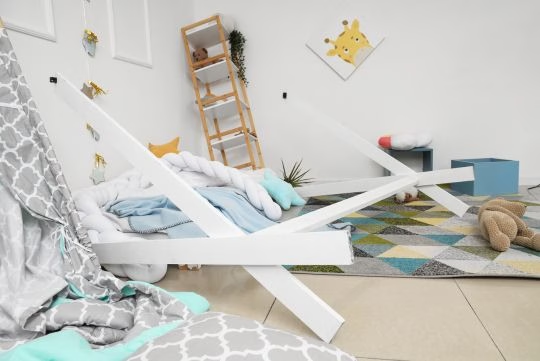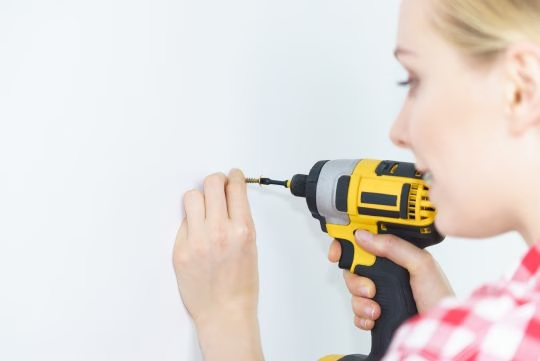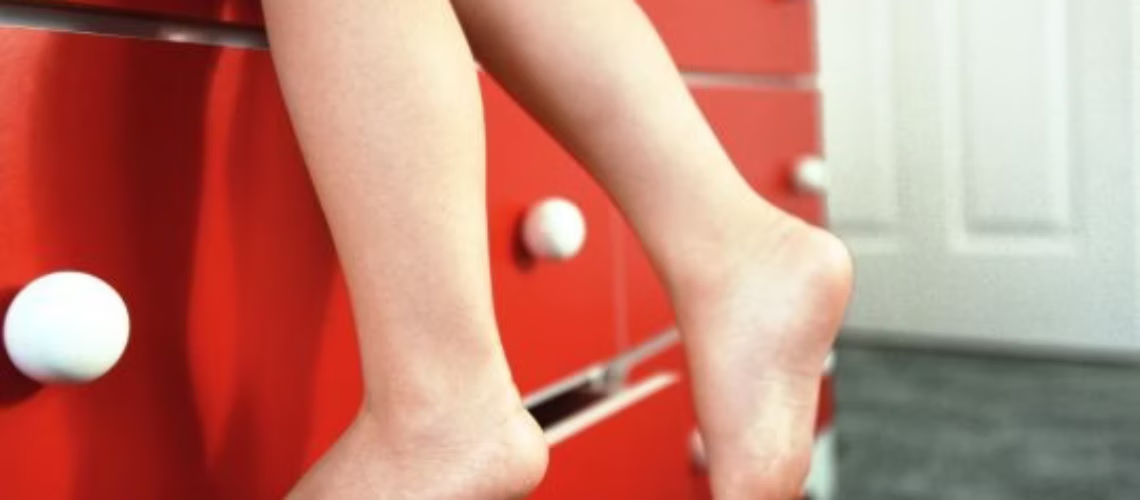Most fall-related injuries to children under 5 happen in the home! Some of these accidents are entirely preventable with the right precautions. Curious children love to climb, pull, and explore, and unsecured furniture can quickly become a hazard in homes and dayhomes alike.
During Safe Kids Week, we’re shining a light on how simple changes—like anchoring furniture to the wall—can make your space significantly safer. Whether you’re a parent or have a dayhome, knowing how to properly secure your furniture is a crucial step in injury prevention.
Furniture tipping can cause serious injury
Furniture tip-overs might seem unlikely, but they happen more often than most people realize. Common scenarios include:
A child pulling out dresser drawers to use as steps
A bookshelf tipping over while a child reaches for a toy
A TV stand collapsing under shifting weight
A child bumping or pushing a lightweight unit during play
These incidents can lead to serious injuries such as head trauma, broken bones, or worse. Even in spaces that feel safe, a simple act of climbing or pulling can quickly turn dangerous. That’s why anchoring furniture is one of the most important—and easiest—things you can do to reduce the risk of injury.

Which Furniture Poses the Greatest Risk?
While any piece of furniture can become hazardous under certain conditions, some items are especially prone to tipping over—particularly when young children are climbing, pulling, or reaching.
Common risk items include:
Dressers and Chests of Drawers: Children often open drawers and use them as steps, making these pieces unstable and top-heavy.
Bookshelves and Tall Cabinets: These can tip easily if climbed or pulled, especially when not anchored to the wall.
TV Stands and Entertainment Centers: Units holding large televisions can become front-heavy and fall if bumped or climbed.
Appliances: Freestanding items like microwaves or stoves (especially with open oven doors) can pose similar risks if not properly secured.

Tip: It’s a good idea to review the furniture in your home or dayhome and assess potential hazards. Think about weight distribution, stability, and whether it’s within reach of a child who might climb.
Bonus Safety Step: Visit recalls-rappels.canada.ca to check if any of your furniture or household items have been recalled due to tip-over risks or other safety concerns.
What You'll Need
Basic Tools:
Drill (with appropriate bits)
Screwdriver
Stud finder (to locate solid wood behind drywall)
Measuring tape
Pencil (for marking wall placement)
Anchoring Materials:
Anti-tip furniture straps or brackets: These often come with new furniture, but can also be purchased at hardware stores.
Wall screws and bolts: Ensure you’re using ones rated for furniture anchoring.
Toggle bolts: A secure option when you can’t find a wall stud.
Drywall anchors: Use with caution—they’re better than nothing, but not ideal for heavy furniture
The Steps
Step 1: Choose the Right Anchor
Use anti-tip straps or brackets that are rated for the size and weight of your furniture.
Avoid using lightweight or temporary solutions like adhesive strips or Velcro—they won’t hold up under pressure.
Step 2: Find a Stud
Use a stud finder to locate solid wood behind the wall.
Mark the spot with a pencil. If a stud isn’t available, use a toggle bolt for better strength than a standard drywall anchor.
Step 3: Position the Anchor
Move the furniture into place against the wall.
Attach one end of the anti-tip strap or bracket to a sturdy point on the furniture (typically the upper back edge).
Mark where the wall portion of the strap/bracket will go, based on your earlier stud or toggle bolt location.
Step 4: Drill and Secure
Pre-drill holes if needed, especially when screwing into a stud.
Screw the wall anchor into place securely.
Attach the furniture side of the anchor and tighten both ends of the strap or bracket.
Step 5: Double-Check Your Work
Give the furniture a gentle tug to test the stability.
Confirm that there is no slack in the straps and everything feels firmly in place.
Tip: Repeat this process for each tall or heavy piece of furniture in your home—especially dressers, bookshelves, and changing tables.

Extra Tips for Reducing Risk
Anchoring furniture is a critical safety step, but there are other important practices that can further protect children from tip-over injuries.
Keep Tempting Items Out of Reach
Avoid placing toys, remotes, or decorations on top of tall furniture—these can tempt children to climb.
If a child sees something they want, their curiosity might override caution.
Avoid Placing Furniture Near Windows
A dresser or chair near a window can become a climbing hazard.
Move climbable items away from windows to prevent falls and to avoid access to window blind cords, which can be dangerous.
Use Drawer Locks
Use safety latches on drawers to prevent children from pulling them out and using them as steps.
An open drawer can also shift the weight of the furniture and increase the risk of tipping.
Don’t Rely on Weight Alone
Just because something is heavy doesn’t mean it’s safe—unanchored furniture can still tip if a child pulls or climbs on it.
Always anchor, even if the furniture feels secure.
Regularly Inspect Your Anchors
Check straps and screws periodically to ensure they’re still tight and undamaged.
After moving furniture or reorganizing a room, re-check anchor security.
Not Comfortable Doing It Yourself?
Not everyone feels confident drilling into walls or working with tools—and that’s okay. You still have options to keep your child safe:
Hire a Handyperson: Local handyperson services can usually install anti-tip kits quickly and affordably. Some even specialize in childproofing homes.
Ask a Trusted Friend or Family Member: If you have a handy relative or friend, see if they’d be willing to help you install anchors correctly.
Visit a Hardware Store for Advice: Staff at hardware stores can walk you through the best tools and techniques for your specific furniture and wall type. They may even be able to recommend a professional installer in your area.
Look for Community Supports: Some regions have child safety initiatives or public health programs that may offer support or guidance for babyproofing your home.
Final Thoughts
Furniture tip-overs are sudden, silent, and often preventable. In just a few minutes, anchoring a bookshelf or dresser to the wall can drastically reduce the risk of injury in your home. It’s a simple act that protects the children in your care—whether you’re a parent, or dayhome provider.
Take time this week to walk through your space, identify unsecured furniture, and start making changes. Prioritizing safety today can prevent tragedy tomorrow.







Responses